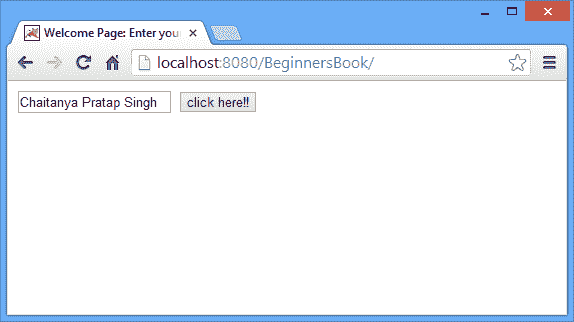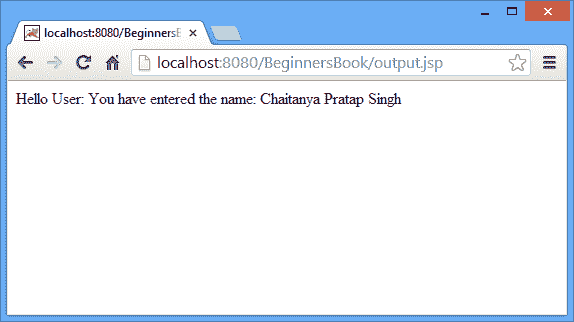原文: https://beginnersbook.com/2013/11/jsp-implicit-object-session-with-examples/
Session是 JSP 中最常用的隐式对象。它的主要用途是访问所有用户的数据,直到用户会话处于活动状态。
session隐式对象的方法
setAttribute(String, object)- 此方法用于通过为对象分配唯一字符串来保存会话中的对象。之后,可以使用相同的String从会话中访问该对象,直到会话处于活动状态。setAttribute和getAttribute是在 JSP 中处理会话时最常用的两种方法。getAttribute(String name)-setAttribute方法存储的对象是使用getAttribute方法从session获取的。例如,如果我们需要访问每个 jsp 页面上的userid,直到会话处于活动状态,那么我们应该使用setAttribute方法将user-id存储在会话中,并且可以在需要时使用getAttribute方法进行访问。removeAttribute(String name)- 可以使用此方法从会话中删除存储在会话中的对象。将唯一字符串标识符作为removeAttribute的方法传递。getAttributeNames- 它返回会话中存储的所有对象。基本上,它会导致对象的枚举。getCreationTime- 此方法返回会话创建时间,即会话启动的时间(变为活动状态)。getId- Servlet 容器在创建会话时为会话分配唯一的字符串标识符。getId方法返回该唯一字符串标识符。isNew()- 用于检查会话是否是新的。它返回布尔值(true或false)。主要用于跟踪客户端是否启用了 cookie。如果禁用 cookie,session.isNew()方法将始终返回true。invalidate()- 它会终止会话并中断会话与所有存储对象的关联。getMaxInactiveInterval- 以秒为单位返回会话的最大停用时间间隔。getLastAccessedTime- 通常用于知道会话的最后访问时间。
session隐式对象示例
下面的 HTML 页面将显示一个文本框和一个提交按钮。提交操作会将控件转移到session.jsp页面。
index.html
<html><head><title>Welcome Page: Enter your name</title></head><body><form action="session.jsp"><input type="text" name="inputname"><input type="submit" value="click here!!"><br/></form></body></html>
session.jsp页面显示用户在索引页面中输入的名称,它将相同的变量存储在session对象中,以便可以在任何页面上获取它,直到会话变为非活动状
session.jsp
<html><head><title>Passing the input value to a session variable</title></head><body><%String uname=request.getParameter("inputname");out.print("Welcome "+ uname);session.setAttribute("sessname",uname);%><a href="output.jsp">Check Output Page Here </a></body></html>
在这个页面中,我们从session对象中获取变量的值并显示它。
output.jsp
<html><head><title>Output page: Fetching the value from session</title></head><body><%String name=(String)session.getAttribute("sessname");out.print("Hello User: You have entered the name: "+name);%></body></html>
输出屏幕




